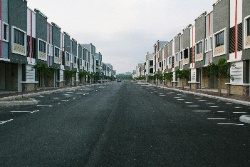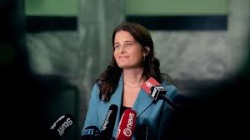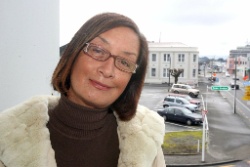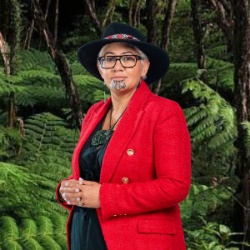ASEAN Forum meeting, Wellington - Jim Sutton
Hon Jim Sutton
Speech Notes
2 December 2002
ASEAN Forum meeting, Wellington
Farib (Sos), Douglas (Day), Ladies and Gentlemen: thank you for inviting me to speak with you tonight. I appreciate the opportunity to address a group that demonstrates such a commitment to expanding understanding of, and links between, New Zealand and the rest of Asia.
Over the past twelve months or so, we have seen clear evidence of what some describe as a tectonic shift in inter-Asian relations as China demonstrates a newfound confidence in the wake of its WTO entry and actively courts ASEAN countries.
Just last month, the leaders of China and the 10 ASEAN countries announced their agreement on a framework for the development of a Free Trade Agreement. Negotiations are to begin this year. It is envisaged that the original 6 members of ASEAN - Indonesia, Malaysia, Singapore, Thailand, the Philippines and Brunei - will complete their free-trade area with China by 2010, and the four newer members - Vietnam, Cambodia, Laos and Burma - by 2015. This ambitious initiative has potentially profound implications for the region, both politically and economically. It also has implications for New Zealand.
At the same time, motivated at least in part by the China's ASEAN diplomacy, other major suitors of ASEAN have embarked on their own initiatives.
Japan and ASEAN approved a Comprehensive Economic Partnership Agreement. This does not go as far as the Chinese agreement but commits Japan and Southeast Asian countries to build an "economic partnership" over the next decade. And, the United States announced that it would enter into bilateral trade agreements with some ASEAN countries.
The emergence of an integrated East Asian economy should also encourage rationalisation of resources, enhance competition and stimulate the removal of protectionist barriers. Rising prosperity in East Asia will be good for our exporters and our own future prosperity.
But these are developments which New Zealand needs to be a part of.
And we are, through the work we are doing, with Australian, on a regional trade agreement with ASEAN, called the ASEAN Free Trade Area/CER Closer Economic Partnership.
Not only is this significant as a negotiation we are undertaking as CER, but it is vital in terms of linking us into the web of links currently being spun around the wider region.
ASEAN and CER have been working towards a CEP since 2000 when Ministers from all 12 countries agreed that such a goal was not only "feasible, but advisable". Initial studies assessed that the overall gains of forming an AFTA-CER free trade area would be US$48.1 billion in twenty years. This would amount to US3.4 billion gains for New Zealand over 20 years.
In September in Brunei I joined my counterpart Economic and Trade Ministers in signing a Declaration outlining the goals and principles of the AFTA/CER CEP. This is a significant step forward and it will add momentum to the process.
The challenge for New Zealand, and the other countries involved, is to identify and tackle areas of direct benefit to businesses and to boost trade flows in the region. We have set up an ASEAN/CER Business Council with representation from the 12 countries to ensure that private sector views inform the AFTA/CER process and help us focus on tangible gains.
Initially the CEP will focus on trade facilitation (reducing barriers to business) and capacity building. The third leg of the tripod, the goal of trade liberalisation, will be addressed in the longer term, when the ASEAN countries are ready. In the meantime, we will continue to work towards this by building confidence and helping in practical ways where we can.
New Zealand recognises that not all ASEAN countries are at the same level of development and some require training and assistance if they are to open up their economies. The persistence of pockets of poverty within ASEAN is in no one's interest and New Zealand is committed to do its bit to help bridge the gap.
Part of the CEP work going on now is capacity building. Last year New Zealand contributed approximately $23.5 million to ASEAN through our bilateral, regional and multilateral programmes. We are currently supporting projects in standards & conformance needs assessments; a major phytosanitary capacity building programme; customs work relating to the drafting and implementing of the WTO Valuation Agreement and food laboratory testing work.
The phytosanitary project, in particular, has had an immediate impact already in developing and strengthening the National Plant Protection Organisations in Vietnam, Cambodia, Laos and Myanmar. This work has relevance not only to AFTA/CER but also to WTO Doha coordination, and APEC trade facilitation capacity building coordination.
I think complementarity is a striking feature of trade and economic links between NZ and ASEAN.
For example, one of our largest exporters of forest products provides high tech cardboard packaging board to banana growers in Davao, southern Philippines. The packaging enables the growers to ensure quality control so that the product can be shipped to third country markets, arriving at their destinations in first grade condition. There is scope for exporters in here and in Australia to help realise the enormous export potential of horticultural industries in ASEAN countries.
In March next year I will lead a trade delegation to Viet Nam, the Philippines and Cambodia. This visit will further trade opportunities in areas such as timber, wood processing, building products, food processing equipment and a wide range of consultancy services, including infrastructural development, energy, tourism capacity development, and agriculture production.
This speech has touched mainly on the trade and business links between New Zealand and ASEAN nations.
Of course, ladies and gentlemen, there are many more links ? including the social and the educational ? between ASEAN and New Zealand. These links are just as important. I know that New Zealand and New Zealanders are enriched by the contacts we have with the nations of Singapore, Brunei, Malaysia, Thailand, the Philippines, Vietnam, Cambodia, Laos, Myanmar, and Indonesia. I am sure you join me in celebrating those aspects as well.
Thank you.
ENDS


 Gordon Campbell: On unemployment, Winston Peters’ low boiling point and music criticism
Gordon Campbell: On unemployment, Winston Peters’ low boiling point and music criticism Labour Party: National Gaslights Women Fighting For Equal Pay
Labour Party: National Gaslights Women Fighting For Equal Pay The Treasury: New Treasury Paper On The Productivity Slowdown
The Treasury: New Treasury Paper On The Productivity Slowdown NZ Government: Government Recommits To Equal Pay
NZ Government: Government Recommits To Equal Pay Emily Ireland - Local Democracy Reporter: Deputy Mayor ‘disgusted’ By Response To Georgina Beyer Sculpture
Emily Ireland - Local Democracy Reporter: Deputy Mayor ‘disgusted’ By Response To Georgina Beyer Sculpture Te Pāti Māori: Māori Unemployment Rate Increases By More Than Four-Times National Rates
Te Pāti Māori: Māori Unemployment Rate Increases By More Than Four-Times National Rates Government: Streamlining Building Consent Changes
Government: Streamlining Building Consent Changes


